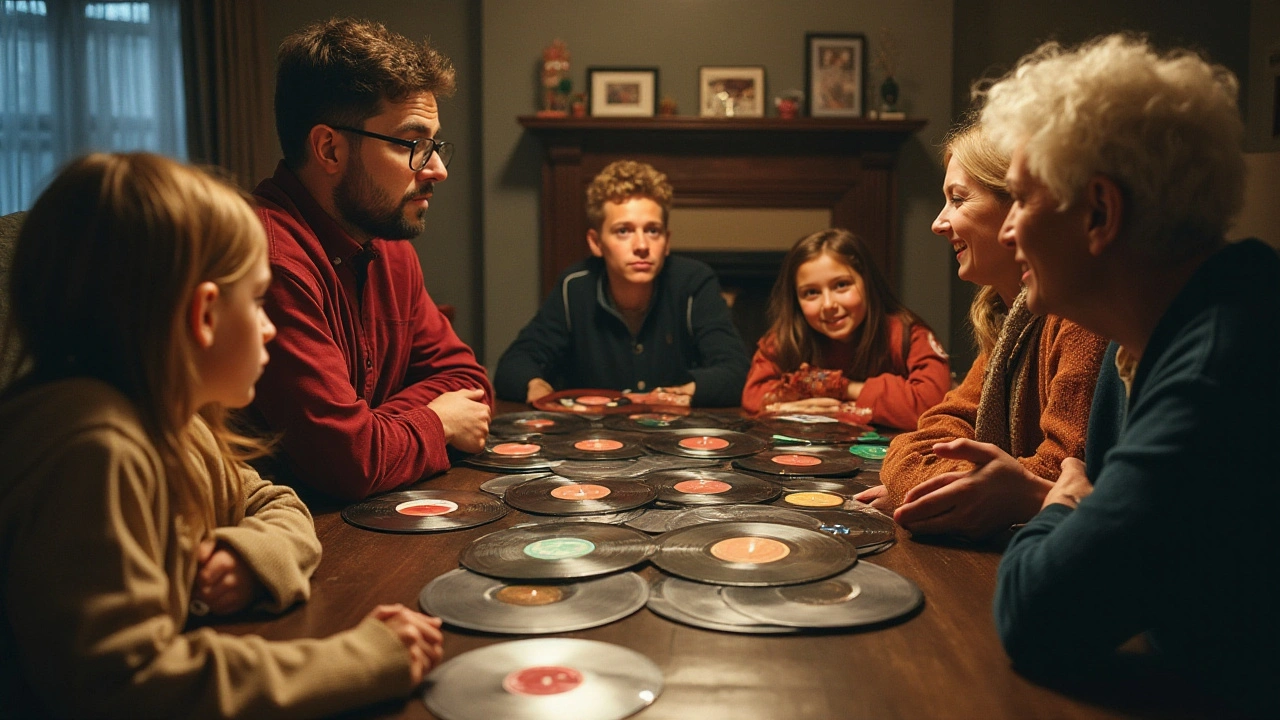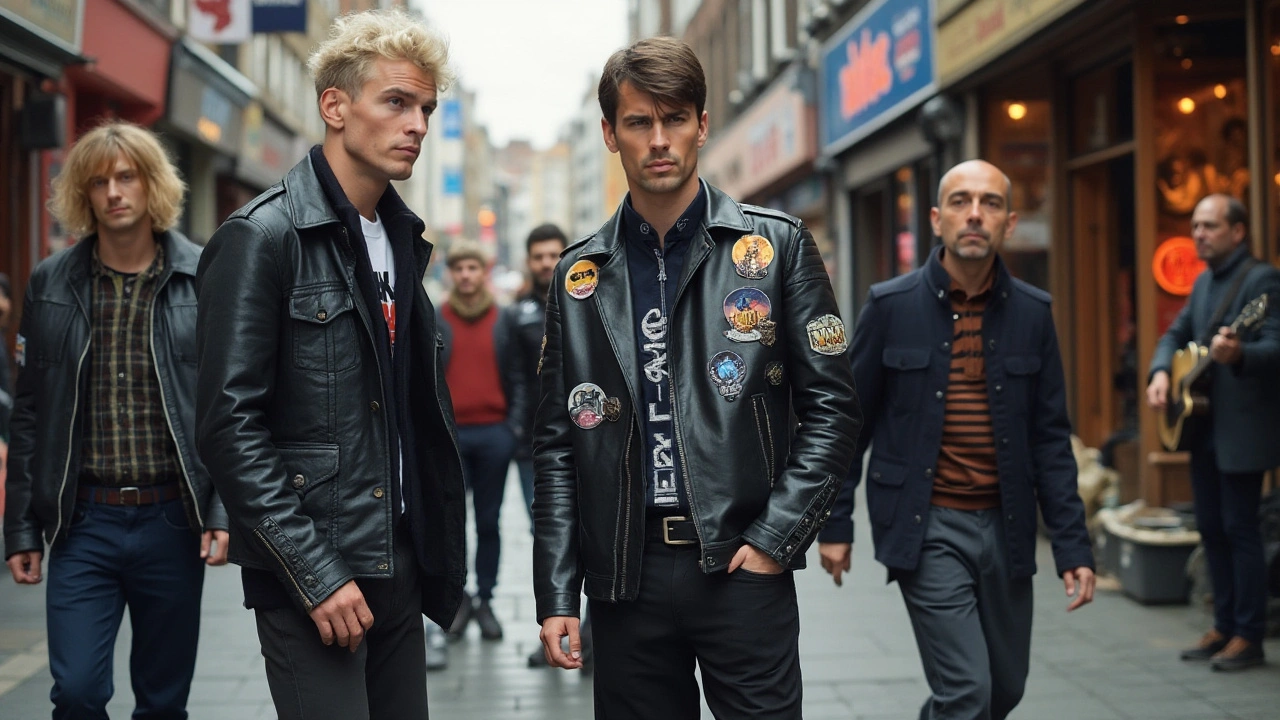Music has always been a powerful force in shaping culture and society. As various subgenres emerge, they bring with them unique sounds, styles, and attitudes that influence the world around us. From rockabilly's vintage flair to hip-hop's bold expressions, each subgenre tells a story about the time and place from which it emerged. They're not just about the music; they represent movements, values, and communities.
As we dive into the captivating world of music subgenres, it's fascinating to see how they impact our daily lives. Often, they influence the way people dress, speak, and even think. These subgenres can become potent cultural symbols, reflecting societal trends and even prompting change. By appreciating the different facets of music, we can better understand its profound role in human history and its continuous evolution.
- Understanding Music Subgenres
- The Role of Subgenres in Cultural Identity
- Fashion and Subgenres: An Influential Bond
- Social Movements Driven by Music
- Future Trends in Music Subgenres
Understanding Music Subgenres
Music subgenres are like colorful threads woven into the rich tapestry of sound that defines cultures worldwide. Imagine them as bespoke musical niches that cater to specific tastes, capturing the essence of particular times, places, and communities. To appreciate their role, one must first grasp what differentiates a subgenre from a primary genre. Typically, a subgenre arises when artists innovate within a genre's conventions, adding unique elements or influences that create a distinct sound. This vibrant process reflects the dynamic nature of cultural evolution, where music doesn't just echo the past, but also forecasts the future trends.
One of the captivating aspects of subgenres is their ability to act as cultural identifiers. For instance, the emergence of grunge in the early 1990s represented a stark departure from the polished aesthetic of glam rock, mirroring a shift in cultural and economic climates. Grunge became synonymous with the lived experiences and fashion of Generation X. Similarly, genres like jazz, known for its expressive improvisation, have branched into subgenres like bebop and fusion, each offering different interactions with society. Such transformations demonstrate how music is not just about sound, but a shared cultural artifact that fosters community and identity.
"Music is an outburst of the soul." — Frederick Delius, a sentiment that encapsulates the emotive power behind the evolution of subgenres.
To delve deeper, one might explore how regional variations contribute to subgenre formations. Take, for instance, the evolution of Latin music. While salsa and tango are both rooted in Latin American traditions, their distinct rhythms, instruments, and cultural influences showcase how local flavors imbue music with their unique twists. This geographical influence can also be seen in the North American landscape, where country music has spun off into variants like bluegrass and alt-country, each with its own loyal fan base and distinct cultural expressions. Such diversity underscores the importance of understanding regional and historical contexts when analyzing music.
The popularity surge of music streaming services has further influenced the proliferation of niche subgenres. Platforms like Spotify and Apple Music use sophisticated algorithms and playlists to introduce listeners to emerging sounds that resonate with their tastes. This democratization of music has empowered independent artists and led to greater musical diversity than ever before. According to a 2023 study, almost 60% of music consumers now discover new music through these digital platforms, a testament to their growing impact. Here's a simple data representation:
| Year | Percentage of New Music Discovery via Streaming |
|---|---|
| 2020 | 45% |
| 2021 | 50% |
| 2022 | 55% |
| 2023 | 60% |
Ultimately, exploring music subgenres is akin to embarking on a cultural journey, one defined by experimentation and diversity. These subgenres not only reflect the myriad expressions of human creativity but also highlight the social, political, and economic narratives that shape our world. By embracing this diversity, we gain a deeper appreciation for music's role in connecting us to our past, informing our present, and inspiring our future.
The Role of Subgenres in Cultural Identity
Music subgenres often play a pivotal role in shaping and defining cultural identity. They don't merely provide entertainment; these music subgenres capture the essence of times and communities. Hip-hop, for example, emerged from the Bronx in the 1970s and quickly became a voice for marginalized communities. It challenged norms and gave birth to a new cultural identity that prized authenticity and resilience. While hip-hop has gone mainstream globally, its roots in expressing social realities remain crucial to its identity.
Similarly, punk rock is another illustration of how subgenres contribute to cultural identity. In the late 1970s, bands like The Sex Pistols used their music to voice discontent with social and economic conditions in the UK. They tore apart conventional fashion with their distinctive aesthetics, blending music with activism in dynamic ways. This movement became synonymous with rebellion, creating strong cultural symbols that transcended music itself. It was, and still is, a powerful conduit for expressing dissent and championing individuality amidst homogeneity.
Moreover, cultural influences from different parts of the world have helped shape the subgenres we know today. The reggae subgenre, for instance, brought Jamaican culture to the global stage, highlighting issues around colonialism and resistance. Ordered by rhythmic beats that echo the heart's natural rhythm, reggae unifies focus and spreads messages of peace, love, and unity, offering a sense of identity to people across islands and continents. This connection to cultural roots makes music more than just melodies; it turns tunes into traditions.
"Music is the shorthand of emotion." – Leo Tolstoy
Interestingly, while music evolves, subgenres often retain their cultural identifiers, helping bridge generational divides. Folk music, a notable subgenre, carries storied traditions passed down through generations. This genre resonates with the past, preserving stories, customs, and values distinct to various cultures. It teaches a new generation about their forebears' dreams and struggles, fostering continuity and belonging. Such a beautiful interplay between music and culture illustrates the ongoing dialogue and exchange that keeps traditions alive even in modern times.
In examining the role of cultural influence in shaping music, it's clear that subgenres serve a much larger purpose. They act as a repository for shared experiences unique to different groups, turning soundwaves into living histories. This profound connection between music and identity sparks conversations, creates movements, and ultimately shapes societies. Whether it is the emotive sway of jazz or the tranquil rhythms of classical music, each subgenre weaves strands into the complex tapestry of cultural identity, reminding us of our roots while allowing us to dream forward.

Fashion and Subgenres: An Influential Bond
The connection between music and fashion is an undeniable phenomenon that has evolved over decades, continuously redefining cultural aesthetics. As music subgenres develop their unique identities, they often bring with them a distinct fashion sense that resonates with their sound and ethos. This relationship is not just about clothing; it's a deeper expression of the cultural, social, and sometimes political narratives entrenched within these musical styles.
Take for instance the rise of punk in the 1970s, a subgenre characterized by its rebellious spirit and anti-establishment lyrics. Punk fashion became iconic, with elements such as leather jackets, torn t-shirts, and bold, unkempt hairstyles symbolizing a break from the mainstream. The punk movement, led by bands like the Sex Pistols and The Ramones, used fashion as a visual protest, challenging societal norms and promoting individuality. This trend trickled down into broader society, influencing not just other musicians but also designers and everyday streetwear.
"Fashion and music are inseparable twins of cultural phenomena. They are unique languages that speak to both the soul and the body." - Fashion historian Valerie Steele
Similarly, hip-hop, which emerged in the late 1970s and early 1980s, has had a profound impact on global fashion trends. Originating in African American and Latino communities, hip-hop's fashion sense was initially characterized by practical streetwear, including oversized jeans, branded sneakers, and flashy jewelry. As the subgenre expanded, so did its fashion influence, reaching global heights and contributing to the popularization of urban-centric apparel. In fact, many high-end fashion brands today draw inspiration from hip-hop styles, highlighting the subgenre's pivotal role in shaping contemporary fashion.
Goth culture, linked to genres such as gothic rock and post-punk, is another excellent example of the powerful bond between music and fashion. Goth fashion, often dark and mysterious, combines elements like lace, velvet, and leather with vibrant makeup and distinct jewelry. This style has maintained its allure, continuously inspiring alternative fashion designers worldwide. The enduring presence of goth fashion in high-street clothing and runway shows underscores its indelible mark on the cultural landscape.
The Enduring Influence on Modern Society
Today's fashion industry continues to draw heavily from music subgenres, proving that this bond remains as influential as ever. Designers often collaborate with musicians to bring out new collections that capture the essence of these subcultures. Moreover, fashion events frequently feature live music to encapsulate the runway's thematic ambitions, directly blending these art forms. Subgenres like indie, K-pop, and electronic music also play significant roles in shaping fashion. Indie rock's casual, vintage-inspired styles, K-pop's colorful and edgy sartorial choices, and electronic music's futuristic aesthetics all find their way into everyday wear. This symbiotic relationship highlights how diverse musical genres continuously inspire innovations in fashion, marking an ever-evolving cycle of cultural interchange. Understanding this interplay can enhance one's appreciation of both music and fashion, recognizing them as intertwined forces that shape how individuals express themselves in society.Social Movements Driven by Music
Music has long served as the heartbeat of social movements, resonating deeply with people seeking change. Various subgenres, recognized for their unique styles and influences, have played pivotal roles in shaping these movements. For instance, the folk music revival of the 1960s, led by influential artists such as Bob Dylan, provided a powerful soundtrack to the civil rights movement in the United States. The lyrics of folk songs often galvanized audiences, capturing the essence of struggle and hope.
Music subgenres are adept at bridging cultural divides, offering a platform for voices that are often marginalized. Punk rock, with its raw energy and rebellious spirit, emerged as a voice against the establishment in the 1970s. It was more than just fast beats and loud guitars; it was a rallying cry for youth disenfranchised with society’s norms. Songs by bands like The Clash and Sex Pistols questioned authority and empowered listeners to challenge the status quo. This movement was not just about music; it was a cultural phenomenon that encouraged political engagement and personal empowerment.
Motown's soulful tunes also played a crucial role in American history, highlighting the struggles and achievements of African Americans and affecting societal perceptions at a time when racial tensions were high. Motown artists didn't just make people dance; they made listeners think about equality and justice. A quote from renowned musician Marvin Gaye captures this sentiment:
"Music is my way of communicating what's in my heart."
Hip-hop is another example of a subgenre that transcended its musical roots to become a global movement with societal impact. Emerging from the Bronx in the 1970s, hip-hop gave a voice to the urban youth of New York City, addressing issues like poverty, violence, and inequality. Today, it stands as an influential cultural force, as artists around the world use hip-hop to speak out on contemporary issues and inspire social change. The genre’s cultural significance continues to grow, engaging audiences in dialogues about race, class, and justice.
To illustrate the powerful influence of music on society, let's consider some notable movements and their accompanying soundtracks:
- The peace movement of the 1960s, fueled by anti-war anthems like "Give Peace a Chance" by John Lennon.
- The feminist movement of the 1970s and 80s, with its anthems of empowerment such as Helen Reddy’s "I Am Woman."
- More recent actions in the environmental movement, with musicians like Billie Eilish leveraging their platform to bring awareness to climate change issues through their performances and public statements.
Music subgenres are more than a collection of sounds; they are catalysts for change, sparking conversations and inspiring action across societal landscapes. The relationship between music and social movements will likely continue to evolve, further demonstrating its profound and lasting impact on culture and society.

Future Trends in Music Subgenres
As we move deeper into the 21st century, the landscape of music continues to evolve at a remarkable pace. Today's music subgenres are shaped not only by technological advancements but by social and cultural dynamics too. With streaming platforms and social media providing unprecedented access, there's an increase in genre blending, where artists mix elements from different styles to create something entirely new. This has given rise to hybrid subgenres across the globe, reflecting a more interconnected world.
Technological innovations are one of the driving forces behind the evolution of music. Artificial intelligence, for example, plays a significant role in creating new sounds and even entire musical pieces. Some artists are leveraging AI to produce songs, generating distinct beats and layers that were unimaginable a few years ago. Then there's the use of virtual reality, which is opening new doors for how listeners experience music. Imagine attending a concert in a digital universe where you can interact with avatars of your favorite artists, all from your living room.
Cultural influence continues to be a primary factor, as youth-driven movements often dictate the direction or rise of certain subgenres. High-speed internet connectivity helps in spreading new trends quickly from one part of the world to another, allowing regional subgenres to gain international recognition almost overnight. For instance, the rise of K-pop demonstrates how a music subgenre can transcend cultural boundaries and language barriers to become a global phenomenon.
New music subgenres like 'Bedroom Pop,' characterized by its lo-fi, unpolished sound, are gaining traction among young listeners. This subgenre reflects a shift towards more personal and relatable music production, made possible by affordable recording technology and platforms such as YouTube and SoundCloud. As people yearn for authenticity, these artists appeal to the raw and unfiltered edges of music, much in contrast to the sometimes overly polished sounds dominating mainstream charts.
Social change is also a potent catalyst in the rise of new subgenres. As societies become more attuned to issues like climate change, social justice, and mental health, these themes permeate new musical styles. Subgenres that explore these issues not only resonate with listeners but also spark conversations and drive awareness. As quoted in a recent Rolling Stone article, "Music isn't just sound; it's a statement, a perspective, a chapter in society's story that demands to be heard."
Cultural critic Aisha Azzar opined, "The future of music lies in its ability to adapt and respond to the collective consciousness. Subgenres will thrive where they can embody the spirit of change."

